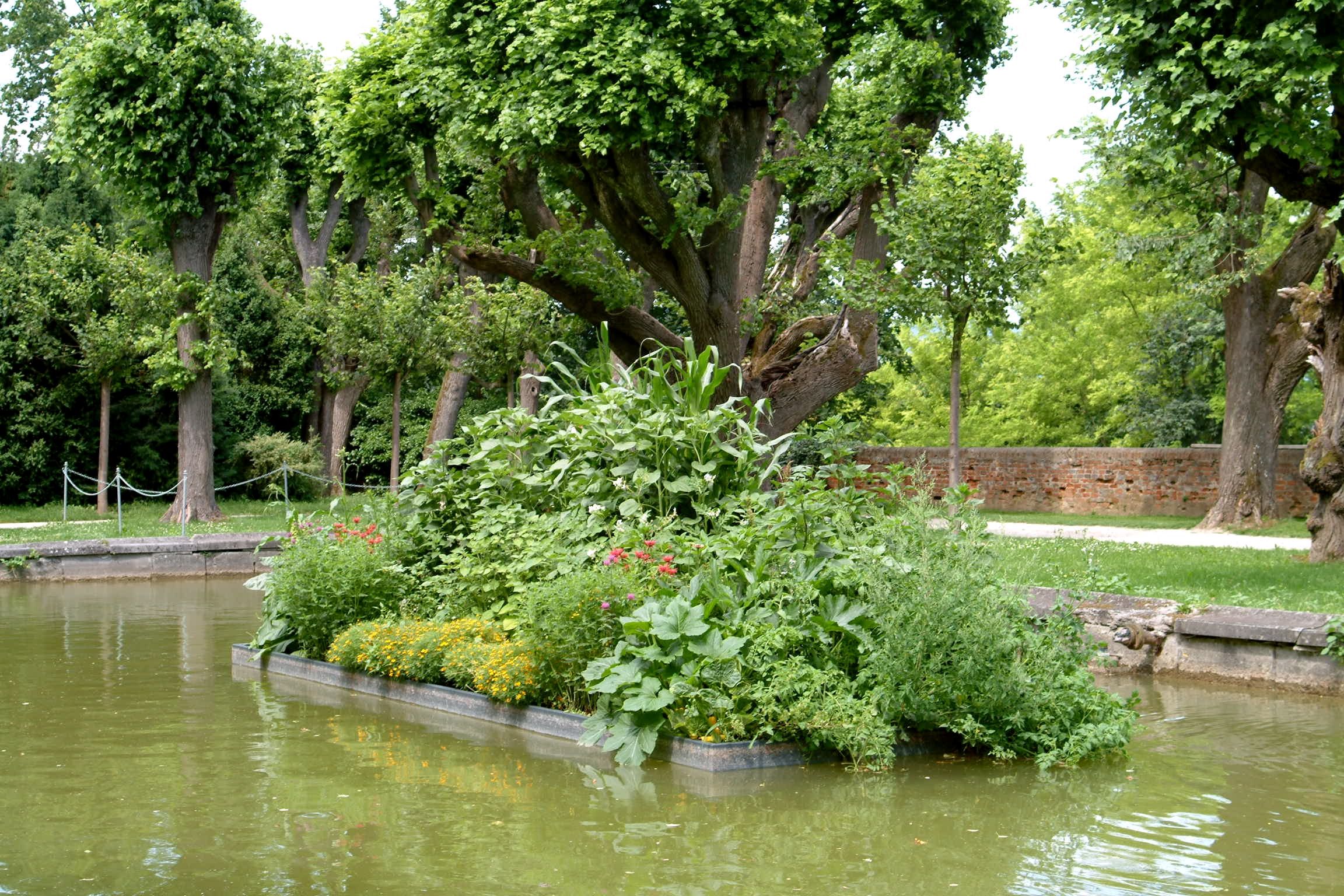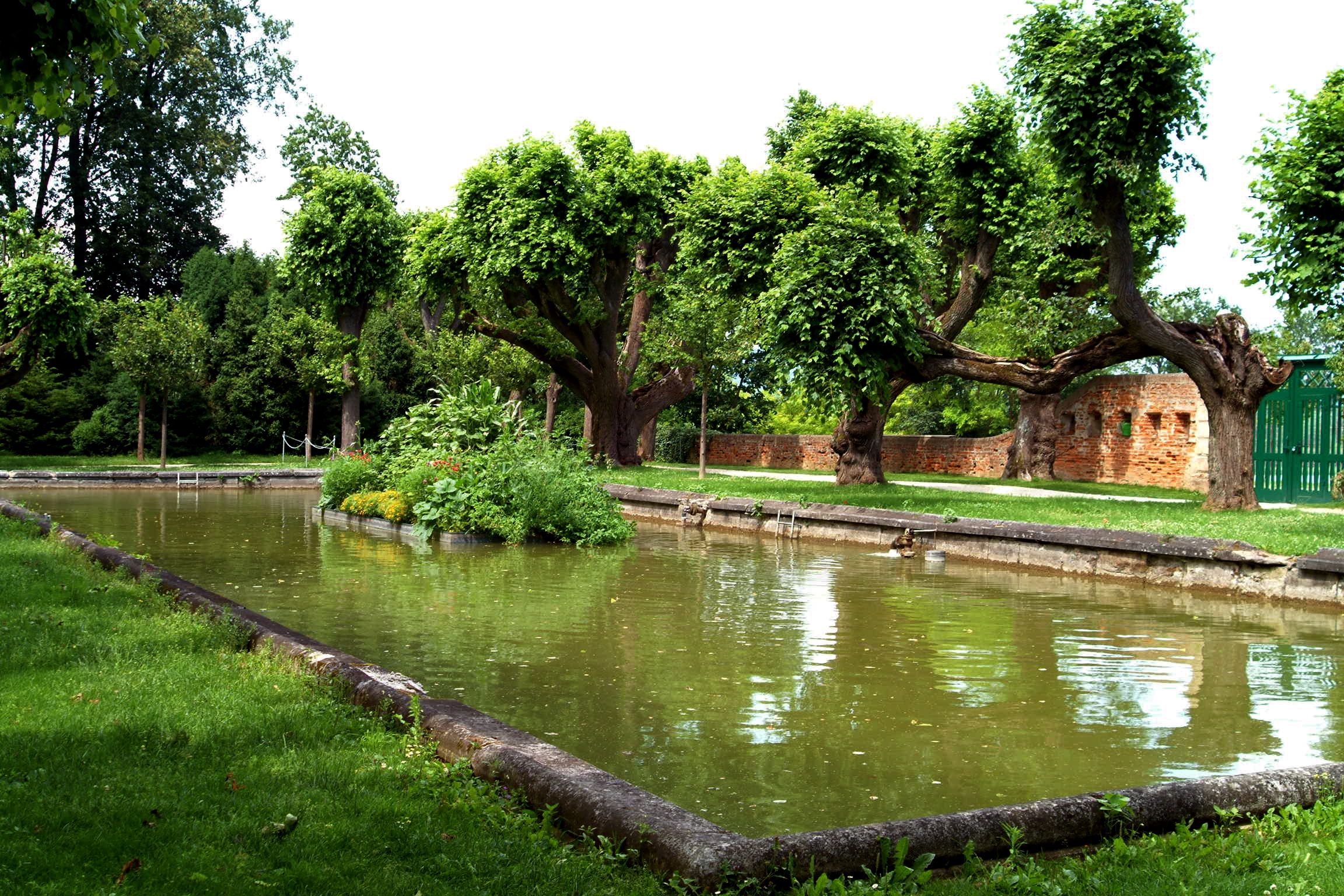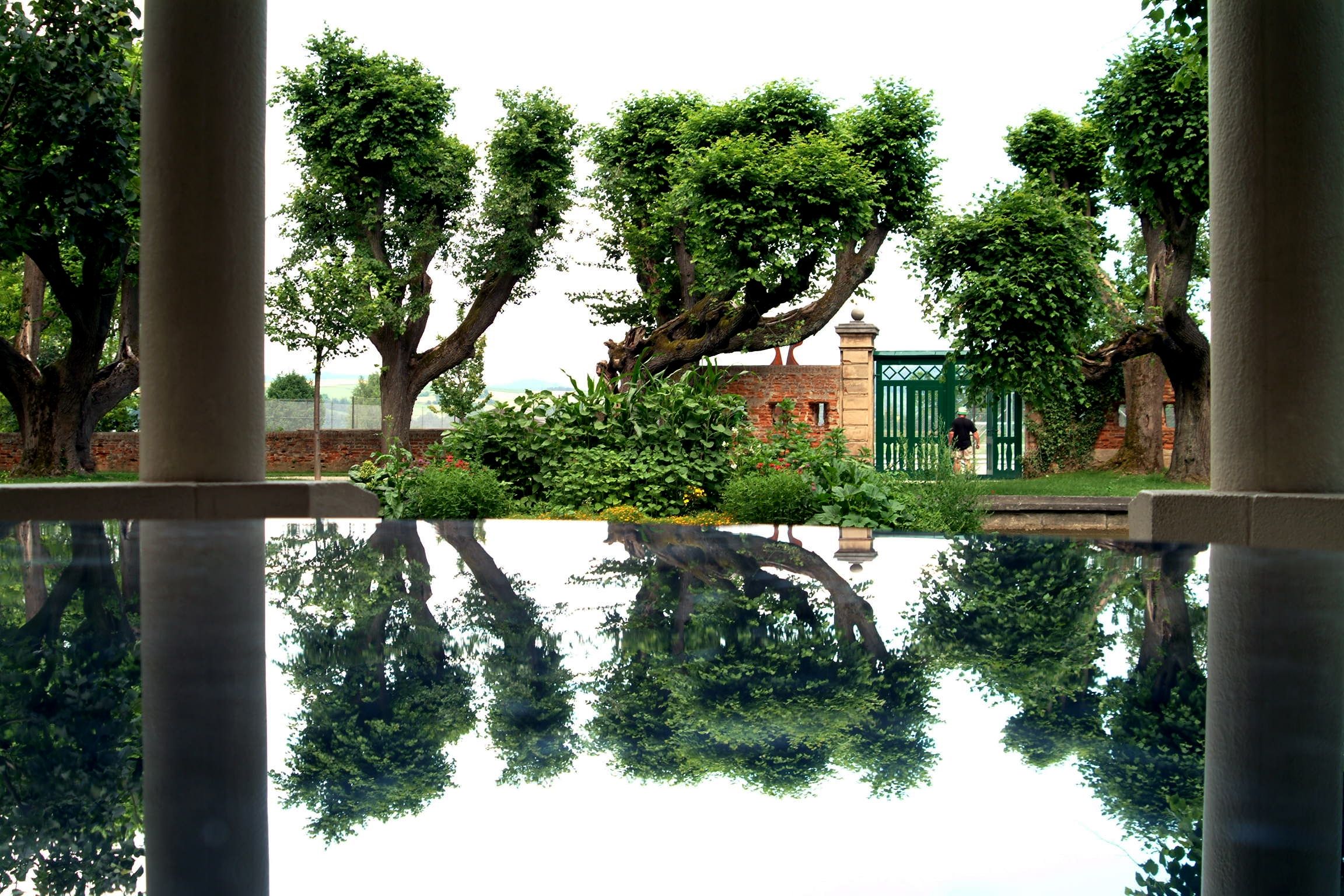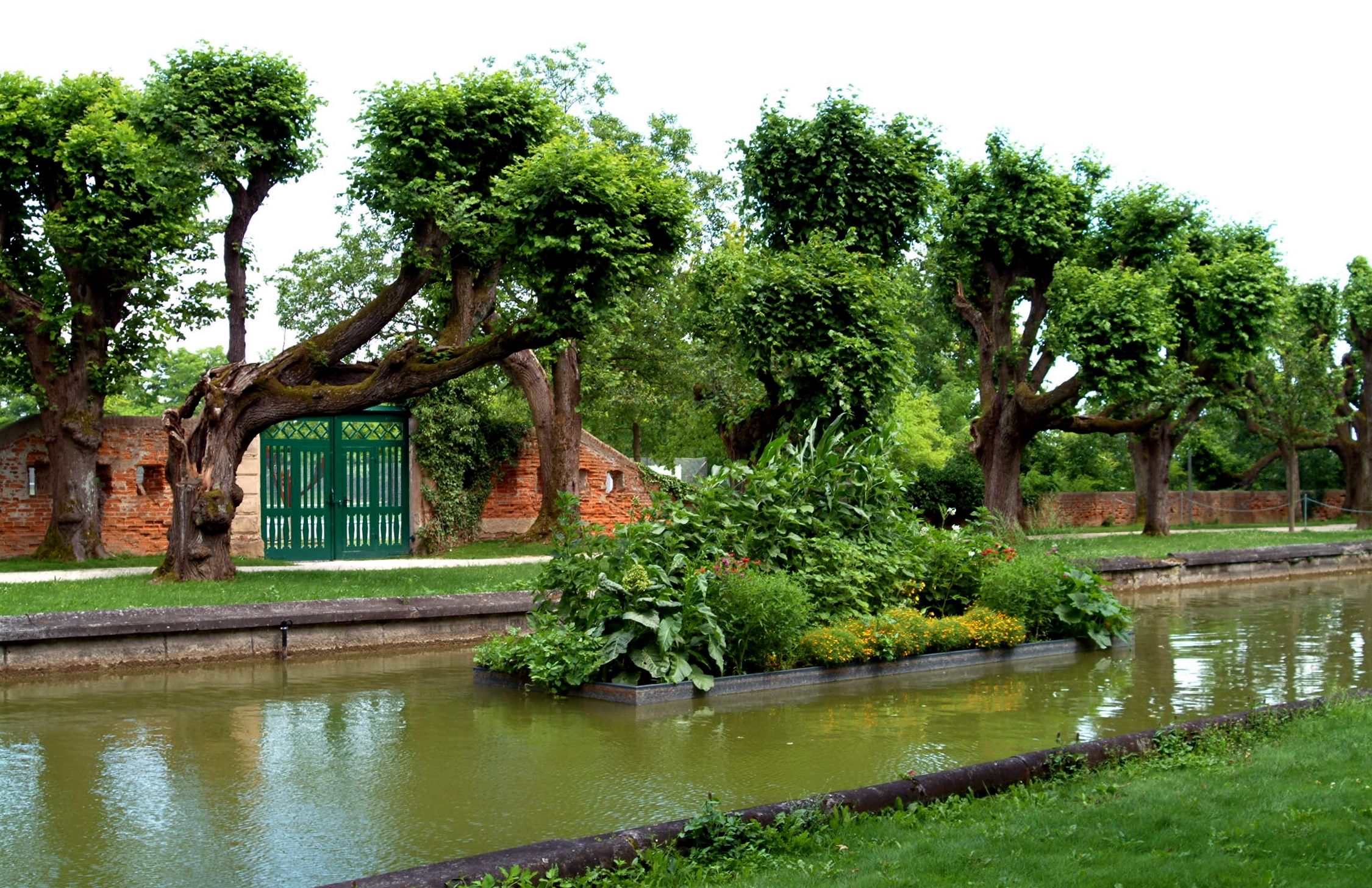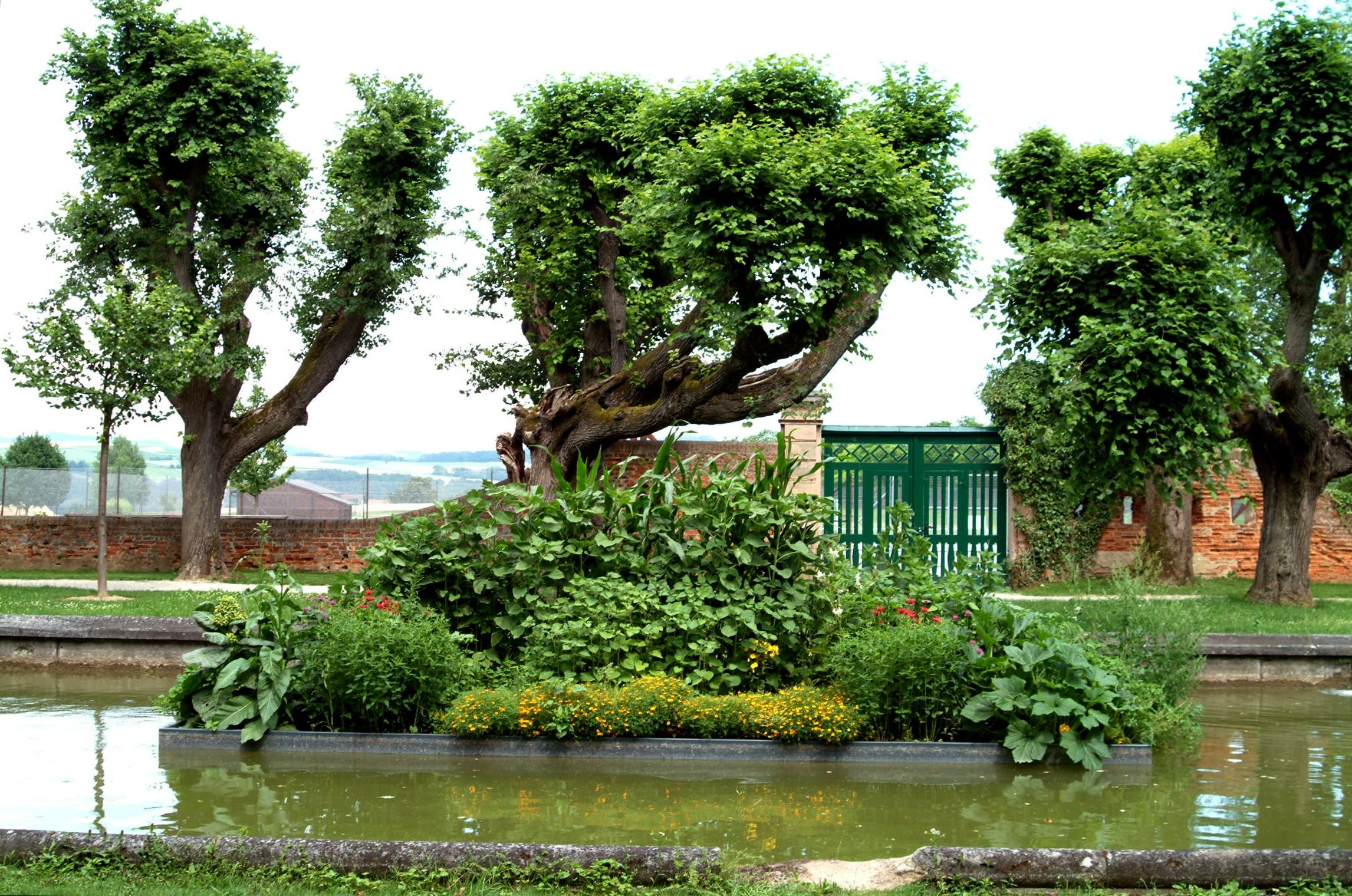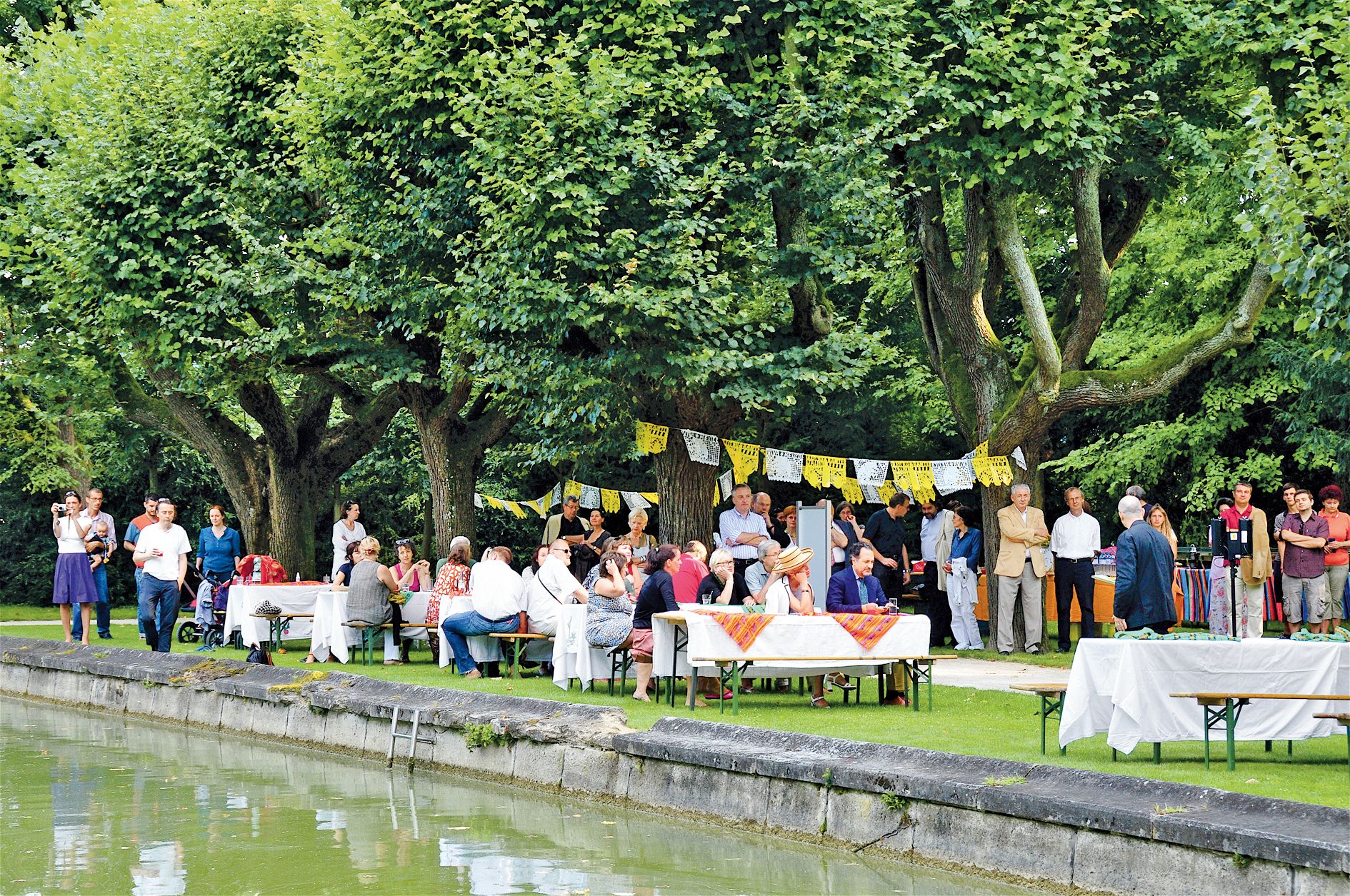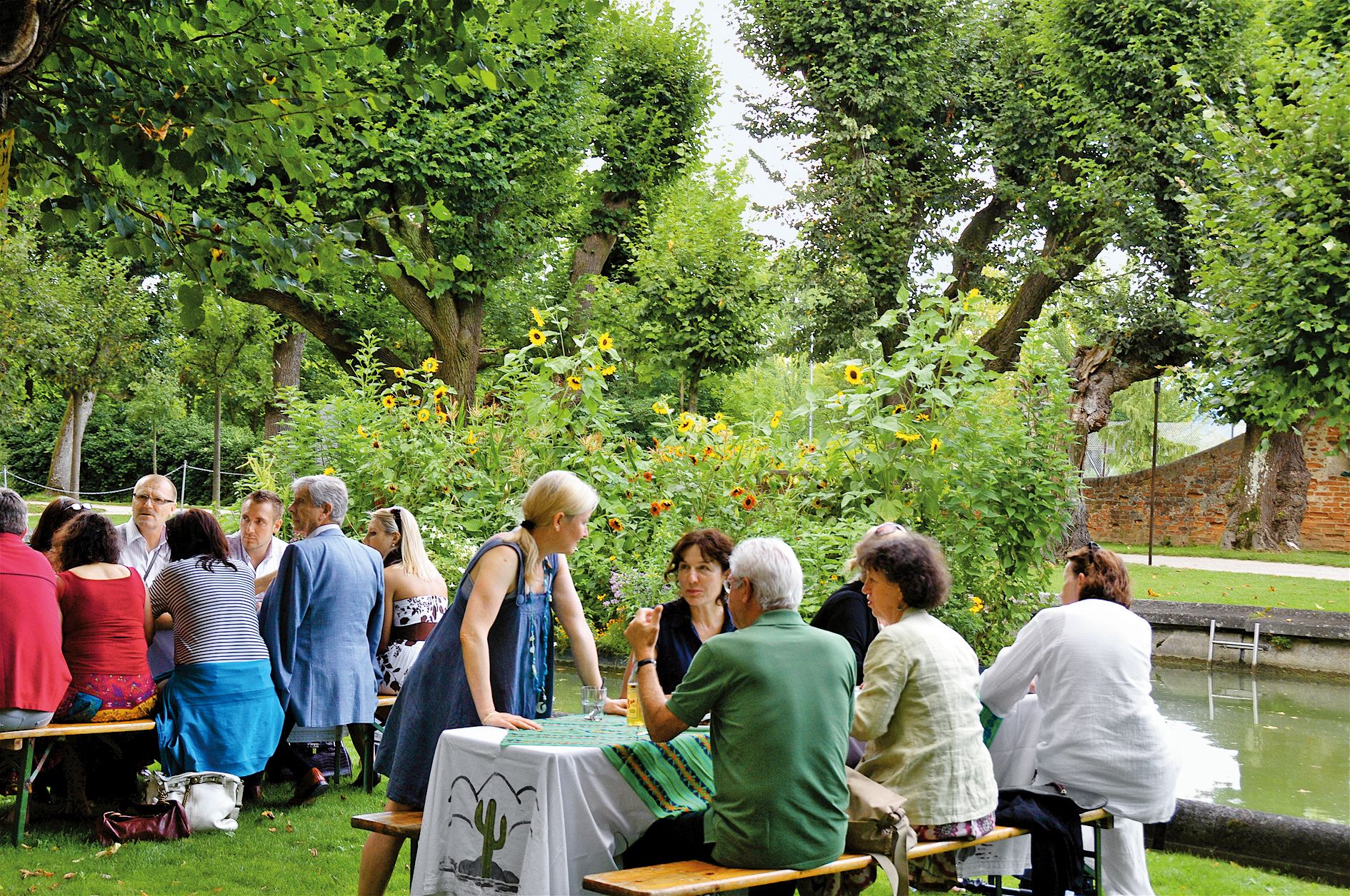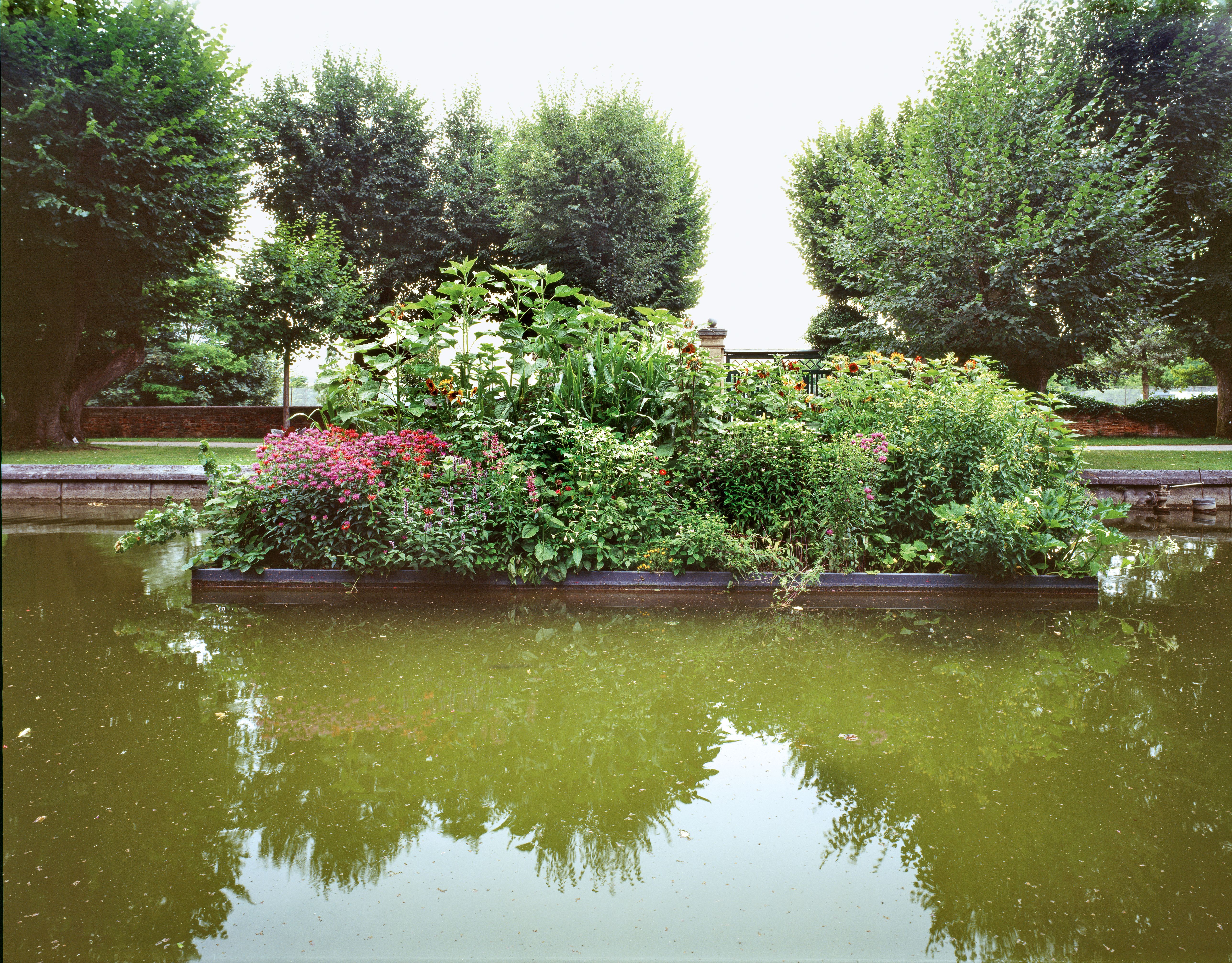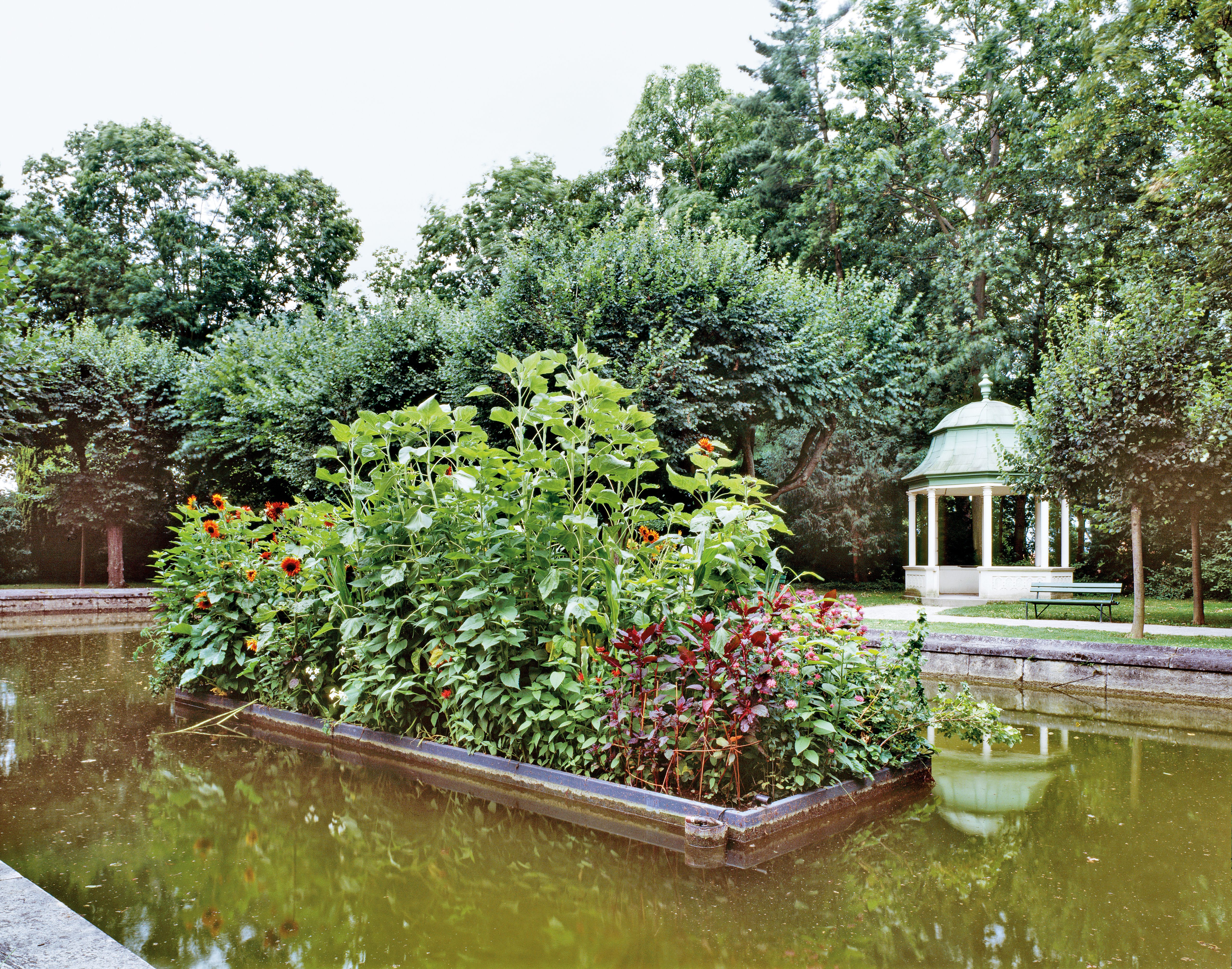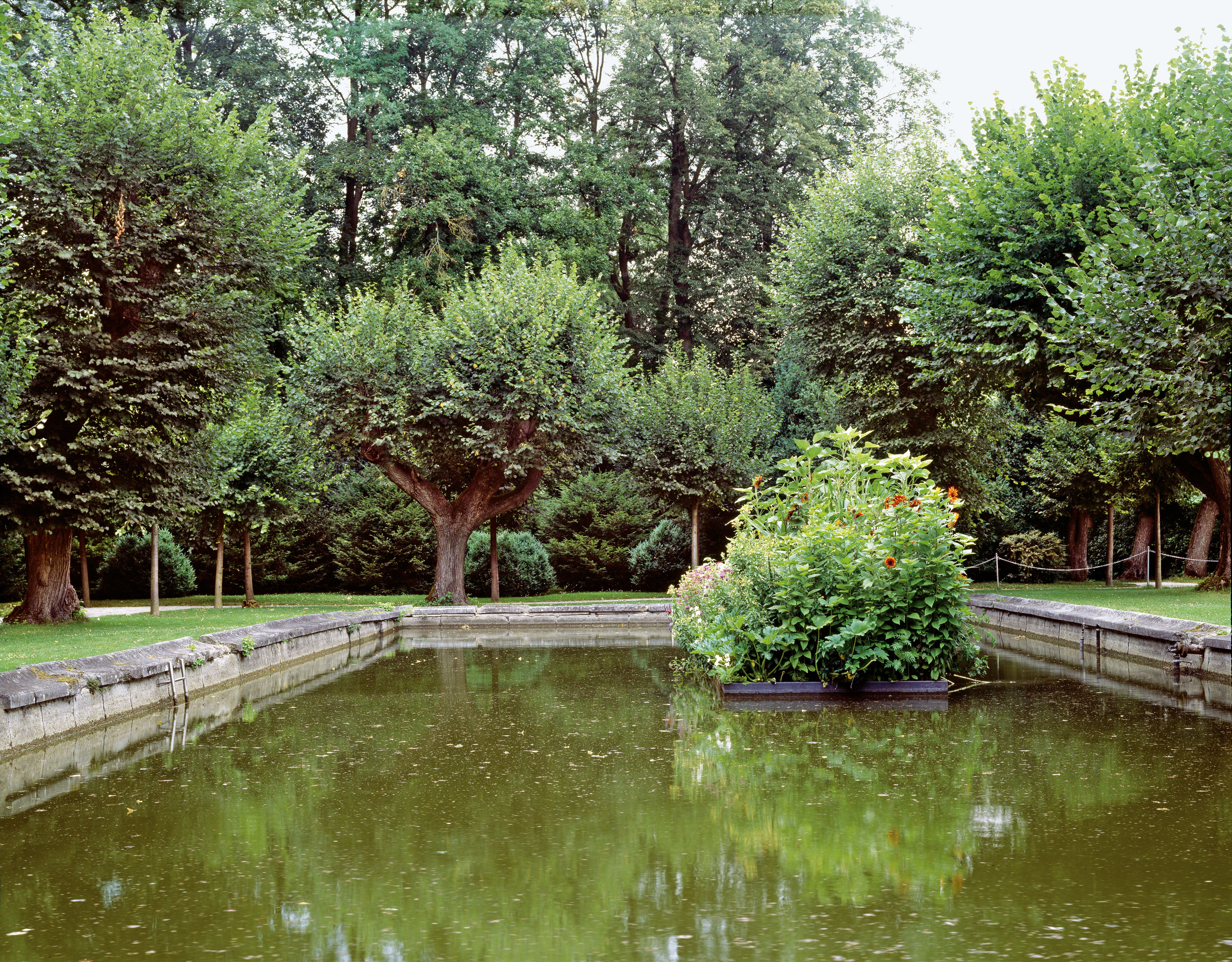Christian Philipp Müller
:
Neue Welt
Back
Information
A metal tub on a concrete plinth is installed in the stone pond on the uppermost level of the park. The size and position of the tub are calculated in accordance with the golden section as a formula for ideal proportions. The artist has planted a vegetable garden in the tub that is replanted every year. The work is called Die Neue Welt (The New World).
Die Neue Welt, eine Art locus amoenus (The New World, a Kind of Locus Amoenus) is a Living Sculpture that spans the historical space between the baroque and the classical periods and the culture historical and geographic space between the old world and the new world, between Europe and America. Furthermore it is a sculpture reduced to the extreme with which Müller brings the full formal impact of the aesthetics of Minimal Art to bear: an unadorned metal basin on concrete feet, the size and position of which have been calculated according to the proportions of the golden section. The Mozart Year 2005, the instruments of Conceptual Art and complex research led Müller to a stone water basin on the uppermost level of the Stift Melk gardens. Here he laid out a vegetable bed like a still life from the Netherlands as a changing process-based sculpture that alters with aesthetic refinement over the course of the seasons, subjected to the cycle of nature in "innocent wildness". In its simple beauty the work provides a wealth of references: the monastic garden as a place for a collection of exotic plants and remedial herbs, the intellectual complex of the Benedictine monks and their Baroque Gesamtkunstwerk, orientalism and the yearning for far away countries, as shown by Johann Bergl in the garden pavilion, bartering, exchange and taste exemplified by imported plants from the New World that served the Native Americans as a source of nutrition. This New World, now cared for by the EVN Collection, is replanted on an annual basis. A participational metaworld of pleasure and celebration has now developed around the artwork, for Christian Philipp Müller is not merely concerned with showing parallels between aesthetic and culinary tastes but also in an engagement with broader social dimensions.
(Brigitte Huck)
Images (12)
